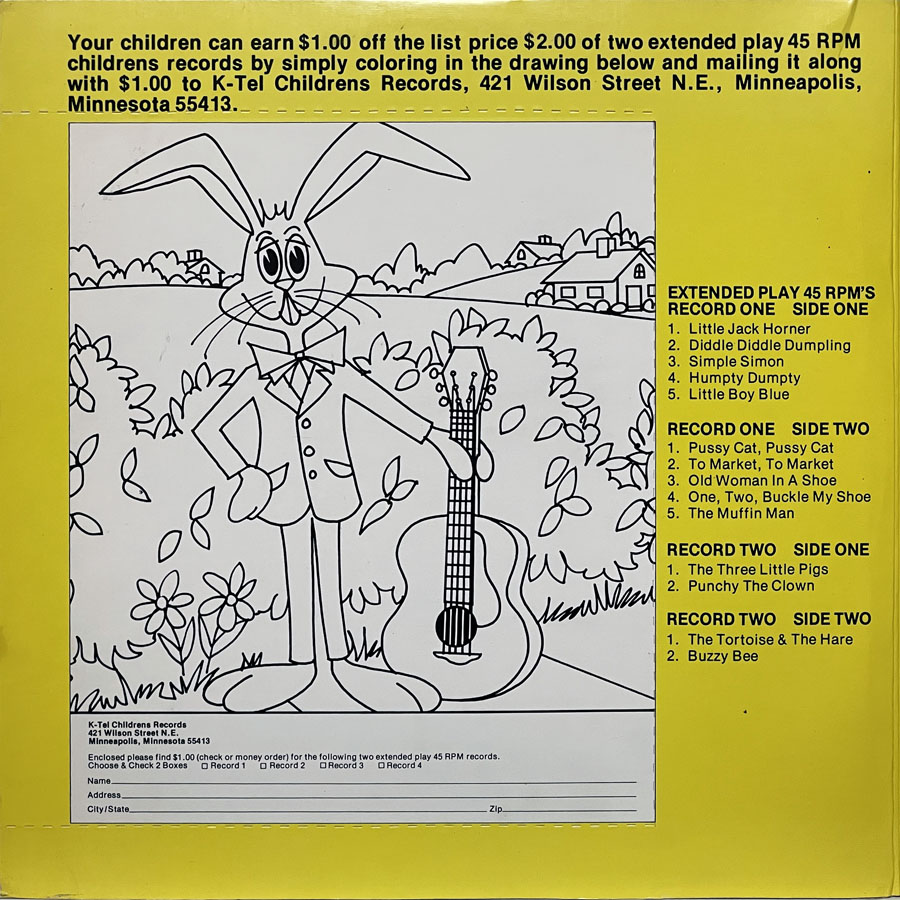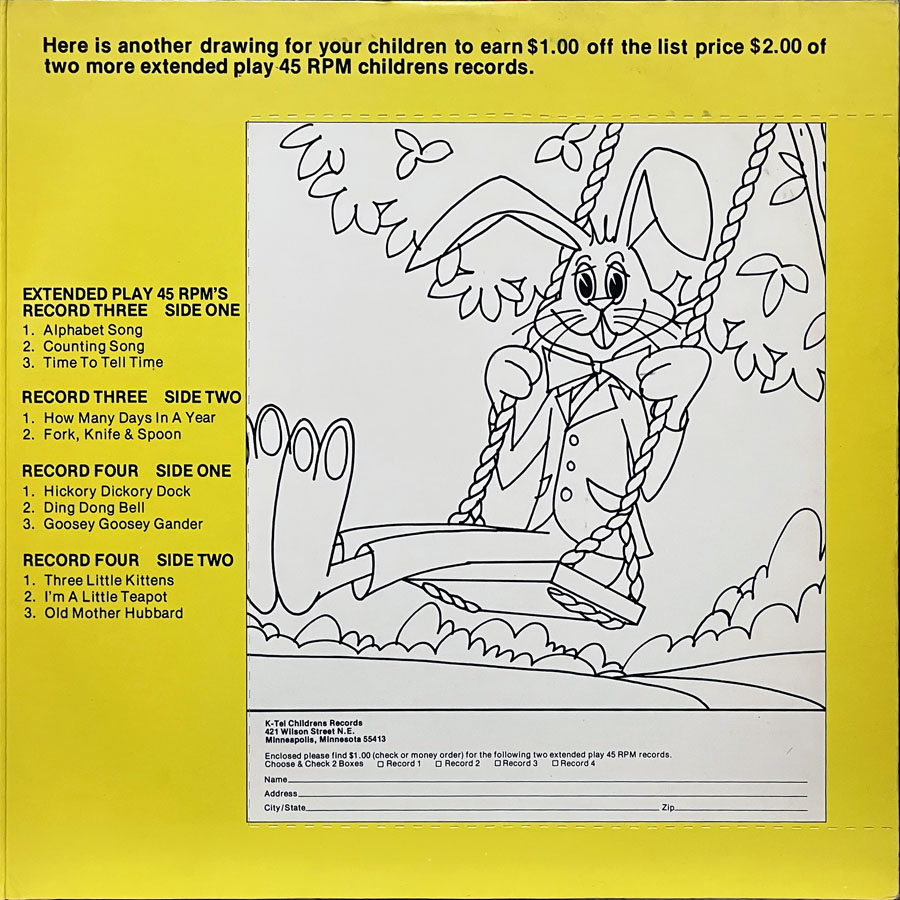Hey there, deep-sea diggers and vinyl voyagers! It’s your bubbly host Finnley the Dolphin, broadcasting live from the briny depths of Finnley’s Audio Adventures! Do you remember the magic of music when it came spinning straight outta your television set and into your living room? What if I told you there was a company that bottled that feeling into brightly colored plastic sleeves with more hits than a tuna cannery at lunch hour? That’s right – we’re talking about the loud, the legendary, the loveably lo-fi K-Tel Records! So put your flippers together and dive with me into a whirlwind tour of mail-order mayhem, musical memories, and compilation chaos. Because this isn’t just history – it’s a K-Tel-a-bration!
The story of K-Tel begins not with records, but with gadgets. In the early 1960s, Canadian entrepreneur Philip Kives made a name for himself as one of the pioneers of direct-response television marketing. From his base in Winnipeg, Kives sold household products like the Teflon-coated frying pan and the Veg-O-Matic using snappy infomercials that became a blueprint for future TV advertising. His approach was fast-paced, persuasive, and embedded with slogans like “As Seen on TV,” a phrase that would soon become synonymous with the K-Tel brand.
By the end of the decade, Kives turned his sights to the music industry. Seeing an opportunity in bundling popular songs into one affordable package, he launched a series of compilation albums marketed directly to consumers. The albums featured hit tracks licensed from major labels, presented under titles like “20 Power Hits” and “Dynamic Sound.” What set K-Tel apart was its ability to cut across traditional retail barriers. Records were sold via television ads and often mailed directly to buyers, eliminating the need for a brick-and-mortar presence.

K-Tel’s business model was revolutionary. While most record labels focused on promoting a single artist or group, K-Tel curated experiences. These records were often thematic, organized by genre, era, or mood, and targeted at casual listeners rather than audiophiles. The releases came with bright, eye-catching designs and dense tracklists, promising value over prestige. By creating a sense of urgency in their TV spots and pricing the records attractively, K-Tel appealed to impulse buyers and gift-givers alike.
However, the label’s success was not without controversy. Throughout the 1970s, K-Tel faced several legal disputes with music publishers and other labels over licensing practices and how its products were marketed. For instance, in 1972, Specialty Records accused K-Tel of passing off inferior re-recordings as original versions of songs by artists like Little Richard and Lloyd Price. A year later, Roulette Records filed a million-dollar lawsuit against the company, alleging breach of contract and misuse of recordings like “Tears on My Pillow.” Despite these legal setbacks, K-Tel maintained a strong presence in the industry and continued to expand internationally.
Audio fidelity was another area where K-Tel often faced criticism. According to commentary from the Oddity Archive, their 1970s-era records were typically pressed on cheap vinyl, which contributed to a thin, brittle sound. Songs were frequently crammed onto each side to maximize content, resulting in heavily edited versions that sometimes removed entire verses or instrumental sections. Additionally, the mixing and transitions between tracks were often rushed or inconsistent, giving the albums a disjointed feel. While the albums were marketed as featuring “original hits,” listeners sometimes found themselves disappointed by what sounded like inferior reproductions. These compromises, though cost-effective, became a defining characteristic of the K-Tel sound.

Yet the company still has its defenders, and nostalgic affection runs deep. In a Reddit thread on r/70s, many users recalled fond memories of growing up with K-Tel albums. Some remembered the excitement of receiving a new compilation for Christmas or buying one at a garage sale. Others noted how K-Tel albums served as their first introduction to disco, doo-wop, or classic rock hits. One user, /u/allerretour, even credited K-Tel with helping them discover songs like “Maggie May” and “Gypsies, Tramps and Thieves.” The records were cheap, accessible, and filled with music that resonated with a wide audience-even if not every version was pristine.
Another user, /u/Striking_Reindeer_2k, shared that they “played the hell” out of their disco compilation, despite recognizing the lack of polish compared to radio versions. Others celebrated the affordability of the albums, noting that even on a tight budget, K-Tel made it possible to enjoy a broad swath of the pop music landscape. For many families, K-Tel albums were part of everyday life, played on 8-tracks in vans or portable record players at home. Whether the quality was hit or miss, the joy they brought was genuine. As /u/Tutter655 summed it up, “Thank God for K-Tel when I was young – we didn’t have much money, so this was a great way to get some of the really popular tunes.”
As the decade progressed, K-Tel’s influence reached beyond music. The company began diversifying into areas like fitness equipment, kitchen tools, and even video games. By the early 1980s, though, changing market dynamics and overexpansion led to financial trouble. The U.S. arm of K-Tel filed for bankruptcy in 1984, but the brand lived on in Canada under the guidance of Philip Kives. He later reacquired rights to the company and continued operations, focusing on licensing its extensive music catalog. Kives remained involved until his passing in 2016, by which time K-Tel had secured a legacy as a pop culture icon.
About 50 Children’s Favorites Record
Among K-Tel’s most enduring and nostalgic releases is the compilation titled “50 Children’s Favorites,” catalog number NU-429. Issued in 1973, this double LP is a vivid example of how K-Tel brought its unique formula to younger audiences. Unlike many of the label’s pop-oriented compilations, this album catered specifically to families, educators, and children. It contained a broad range of traditional folk and nursery songs like “Mary Had a Little Lamb,” “Row, Row, Row Your Boat,” and “Twinkle, Twinkle Little Star,” all re-recorded by anonymous studio musicians. While the artists remain unnamed, the album’s charm lies in its earnest simplicity and thematic unity.
The album cover features a surreal yet endearing image of a person in a giant bunny costume sitting on the grass with a group of children. The bunny reads from a large book titled “Sing Along,” setting a tone that is equal parts whimsical and slightly uncanny. The back cover reveals a dense tracklist of 52 songs split across four sides, showcasing K-Tel’s typical emphasis on quantity. Each side contains a dozen or more brief renditions of classic children’s songs, with runtime and production values optimized for accessibility rather than fidelity. These renditions were often upbeat, brief, and designed to maintain the short attention spans of children.

What makes this release particularly interesting is the way it blends entertainment with interactive promotion. Included with many copies were coloring sheet inserts. These were not mere giveaways but cleverly disguised marketing tools. Children were encouraged to color in cartoon rabbits holding musical instruments and mail them back to K-Tel along with one dollar. In exchange, they would receive a discounted two-record EP set containing even more children’s songs. This campaign illustrates how K-Tel engaged young audiences not only through audio but also through participatory incentives.
Another unique element is the extensive list of songs found in the EP promotion itself. Titles like “The Three Little Pigs,” “Punchy the Clown,” and “To Market, To Market” were not included on the main album, offering an added incentive to participate. These promotional records were smaller, typically 45 RPM, and featured simple illustrations and straightforward themes. This direct-mail strategy mirrored K-Tel’s earlier infomercial tactics, just adapted for a new generation. It also emphasized the company’s mission to make music affordable, accessible, and part of everyday home life.

Today, “50 Children’s Favorites” is remembered not only for its musical content but also for the physical artifacts that came with it. The cover, inserts, and even the mailing address evoke a tangible sense of mid-century marketing. For collectors, the album represents a fusion of nostalgia, design, and music distribution. In many ways, it encapsulates the essence of K-Tel’s business model: fun, fast, and unpretentious. It stands as a time capsule of how music was consumed and marketed to families during a particular cultural moment in North American history.
Well folks, there you have it! From disco infernos to bunny-costumed ballads, K-Tel splashed its way into living rooms, record crates, and hearts across the globe. Whether you loved them for the bargain or bristled at the edits, there’s no denying K-Tel made waves. And isn’t that what great pop culture does – stir up sound, swirl around in our memories, and leave a groove you can’t help but spin again? This is Finnley the Dolphin, signing off with a flip of the fin and a needle on the wax. Until next tide, keep listening, keep laughing, and keep those grooves groovin’!
Sources:
Works Cited
“About K-Tel.” K-Tel, 4 May 2016, archived at the Wayback Machine,
https://web.archive.org/web/20160504181238/https://www.ktel.com/about.php. Accessed 8 June 2025.
“Discogs – K-Tel Label.” Discogs,
https://www.discogs.com/label/2553-K-Tel. Accessed 8 June 2025.
“Discogs – Unknown Artist – 50 Children’s Favorites.” Discogs,
https://www.discogs.com/release/7310789-Unknown-Artist-50-Childrens-Favorites. Accessed 8 June 2025.
Oddity Archive. Episode 28: Record Ripoffs. YouTube, 28 Apr. 2014,
https://www.youtube.com/watch?v=D1SSiu_yk8g. Accessed 8 June 2025.
“Remember K-Tel Albums?” Reddit, thread by /u/Blindemboss, r/70s,
https://www.reddit.com/r/70s/comments/17rf513/remember_ktel_albums/. Accessed 8 June 2025.
The Guardian. “Philip Kives, Founder of K-Tel and Infomercial Pioneer, Dies Aged 87.” The Guardian, 28 Apr. 2016,
https://www.theguardian.com/media/2016/apr/28/philip-kives-ktel-infomercial-dies-87. Accessed 8 June 2025.
Willis, John. “K-Tel ‘As Seen On TV’ Compilation Album History.” Mental Floss,
https://www.mentalfloss.com/posts/k-tel-as-seen-on-tv-compilation-album-history. Accessed 8 June 2025.
“Specialty Refused Order Vs. K-Tel Over ‘Greats.’” Billboard, 23 Dec. 1972, p. 43.
“Roulette Spins Out $1 Million Suit Vs. K-Tel International.” Billboard, 12 May 1973, pp. 4, 66.
“K-Tel Into M.O. With Set On BBC ‘Pop’ Serialization.” Billboard, 27 Oct. 1973, p. 56.
White, Chris. “K-Tel Mulls Cutback As Profit Edge Dips.” Billboard, 7 Dec. 1974, p. 56.
